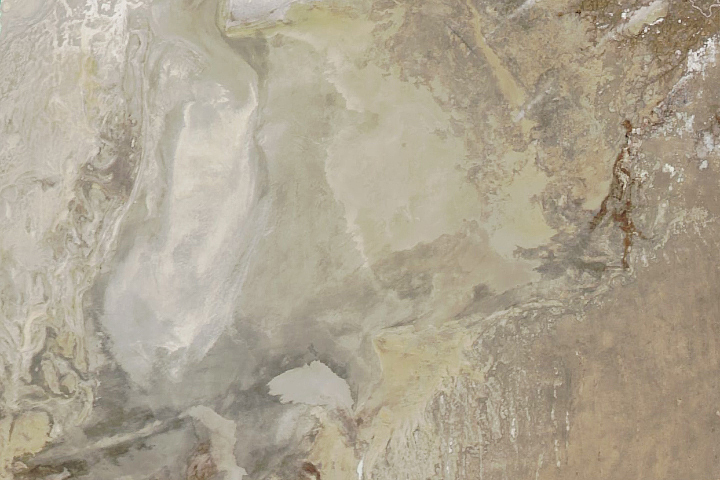
Every month on Earth Matters, we offer a puzzling satellite image. The December 2020 puzzler is above. Your challenge is to use the comments section to tell us what we are looking at, where it is, and why it is interesting.
How to answer. You can use a few words or several paragraphs. You might simply tell us the location, or you can dig deeper and explain what satellite and instrument produced the image, what spectral bands were used to create it, or what is compelling about some obscure feature. If you think something is interesting or noteworthy, tell us about it.
The prize. We cannot offer prize money or a trip to Mars, but we can promise you credit and glory. Well, maybe just credit. Roughly one week after a puzzler image appears on this blog, we will post an annotated and captioned version as our Image of the Day. After we post the answer, we will acknowledge the first person to correctly identify the image at the bottom of this blog post. We also may recognize readers who offer the most interesting tidbits of information about the geological, meteorological, or human processes that have shaped the landscape. Please include your preferred name or alias with your comment. If you work for or attend an institution that you would like to recognize, please mention that as well.
Recent winners. If you’ve won the puzzler in the past few months, or if you work in geospatial imaging, please hold your answer for at least a day to give less experienced readers a chance.
Releasing Comments. Savvy readers have solved some puzzlers after a few minutes. To give more people a chance, we may wait 24 to 48 hours before posting comments. Good luck!
UPDATE on January 13 — This puzzler shows the southeastern part of the Aral Sea. Julia Daly quickly identified the location as the Aral Sea. Steve Goodman later pointed out that the desiccated part of the sea is now sometimes called the Aralkum Desert. Winter snow cover is visible in the wide view.




Salt lake
Southern section of Aral Sea, which has been slowly evaporating since irrigation began drawing off surface water contributions in the 1960’s. I believe that a portion of the delta of one of the contributing rivers is just visible in the NE section of the image.
Eastern “shore” of the Aral Sea, with no water.
It’s the eastern part of what’s remaining of the Aral Sea. It’s a color infrared satellite photo, so what little vegetation there is in the northeast of the photo appears in maroon and pinks.
Is the Aral Sea? Completely dried up?
Kaolin mine, Georgia USA
Looking at the Great Wall of China in the top left and the desert in Mongolia
This is the salt pan inside Etosha national park in Namibia
Desiccated South Eastern portion of the Aral Sea. Major catastrophe in industrial diversion of the rivers that used to feed a once thriving large body of water. Now a shrunken remnant in a salt desert.
Desiccated SE portion of Aral Sea. Major ecological disaster from decades of industrial agriculture diverting the rivers that kept it alive. Now a shrunken remnant amid a salt desert.
A view of the southern portion of what was (until recently) the Aral Sea.
It reminds me of the words of George Taylor (played by Charlton Heston) at the end of “Planet of the Apes” (slightly paraphrased):
“You finally really did it. You maniacs! You drained it dry! God damn you! God damn you all to hell!”
This is what is left of the former Aral Sea, now called the Aralkum Desert. This is the southern portion of the former sea, once one of the five largest lakes in the world. Irrigation needs for cotton production have diverted water from the two rivers that once fed the lake have reduced it to a slim lake on the left, a slightly larger lake in the north, and this inhospitable desert pictured above.
I think most of the other guesses are correct: this looks like the eastern Aral Sea.
I think that the river in the upper-right corner of the image is the Syr Darya; the feather-like plumes pointing towards the center of the image look like the fans of sediment deposited by now-dry rivers flowing into the former sea.
Nice puzzler!